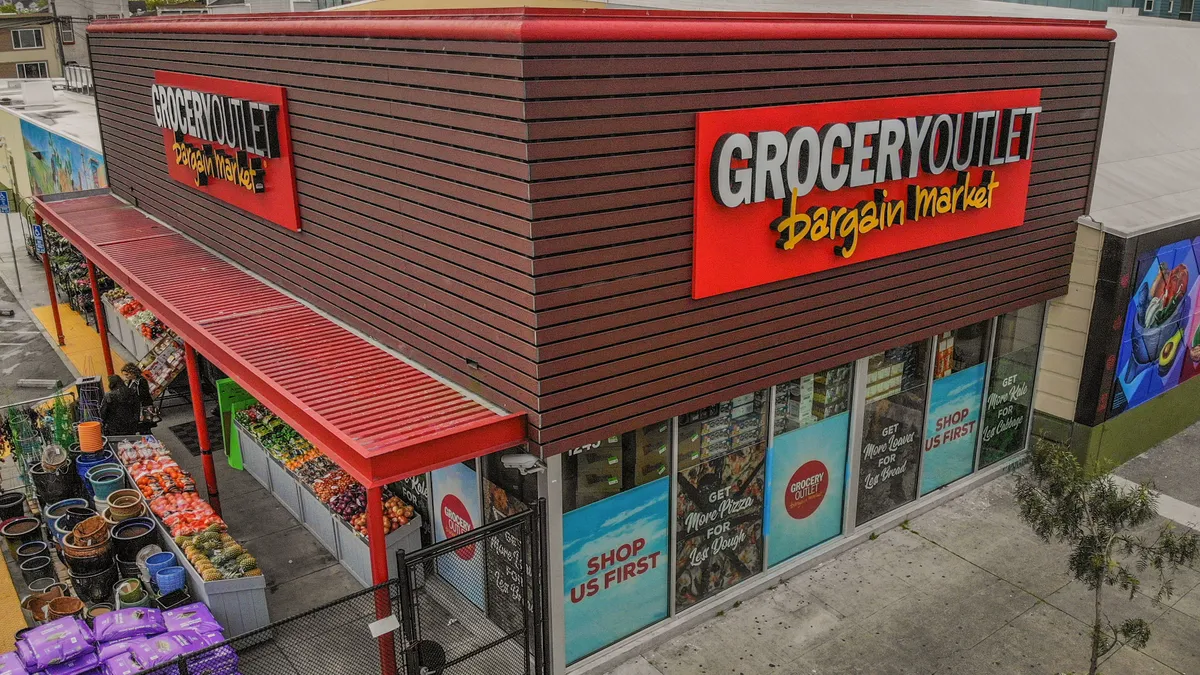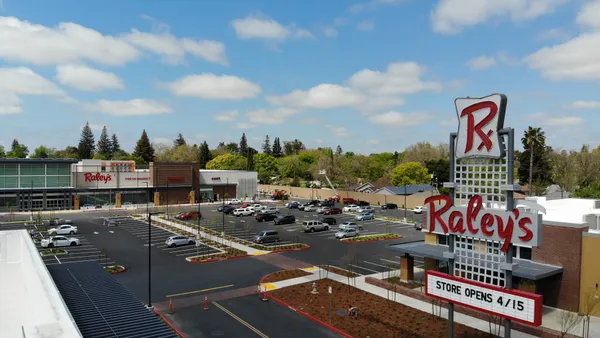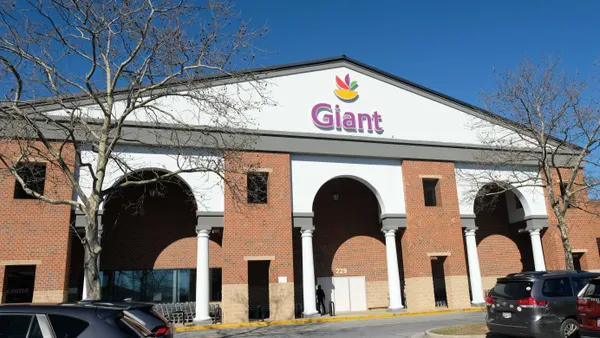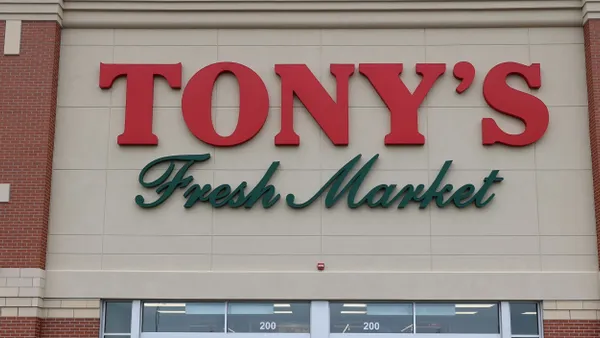While Grocery Outlet began operating in 1946 as a military surplus store, 2019 has been a banner year for the discounter. Showing steady growth, it now operates more than 300 stores in California, Washington, Oregon, Nevada, Idaho and Pennsylvania.
This year, in particular, the discount grocer capitalized on the red-hot discounter space, going public on the NASDAQ June 20 at a price of $22 a share. Grocery Outlet CEO Eric Lindberg told Grocery Dive that the company celebrated in New York with more than 100 people including employees, executives, independent operators and their families.
"It was a big milestone for everyone, but we were all back in the office on Monday the 24th, and our first message that we all sort of got together on was this is a company that executes," Lindberg said.
Since the IPO, investors have been bullish on the discount grocer. Equity analysts with Jefferies wrote on Aug. 19 in a note to investors that the second quarter illustrated Grocery Outlet's unique company qualities: "Predictable [and] stable fundamentals, a top-notch leadership team and a scalable [independent operator] model."
That unique business model of independent operators and opportunistic buying to create a treasure hunt-like shopping experience for shoppers catered to each community it serves has so far paid off in the publicly traded space. In its first publicly reported earnings, Grocery Outlet saw a net sales increase of 12.2% for the second quarter ending June 29. On Friday, the retailer's stock price was $32.50 per share during mid-day trading.

"I think that their success is to be respected, and it could have been expected," said Bill Bishop, chief architect at Brick Meets Click, noting Grocery Outlet's performance has been nothing short of exceptional.
Lindberg attributes the company's success to a stable business strategy that is uncomplicated but effective. "It's not to say the innovations aren't great, but we've always been very fortunate that we've been fairly boring, that we've gone after opportunistic sourcing as a strategy, that we've gone after sort of propelling the operator model as a strategy," he said.
The company has remained true to its niche and "put blinders on" to what competitors are doing, Lindberg said. "If we deliver exceedingly great values to customers in these really shoppable, fun stores, curated by operators who are very invested in the community, that's a winning strategy."
In its S-1 filing, Grocery Outlet said it saw potential to operate up to 4,800 stores in the future. When asked to confirm expectations, Lindberg said he projects store count will grow by about 10% in the coming years. "Ten percent growth is the number that we've been doing and the number we're putting forward as the future growth as well," he said.
"It's not to say the innovations aren't great, but we've always been very fortunate that we've been fairly boring, that we've gone after opportunistic sourcing as a strategy, that we've gone after sort of propelling the operator model as a strategy."

Eric Lindberg
CEO, Grocery Outlet
The company has opened 32 stores in new communities this year. Moving forward, Grocery Outlet will focus on expanding its footprint in states where it currently operates. For example, Lindberg said there is still a lot of room to grow in Southern California.
Lindberg also sees potential in markets in and around Pennsylvania, where Grocery Outlet operates 20 stores. Areas including Southern New Jersey and New York, Delaware and Maryland could hold as many as 200 to 250 Grocery Outlet stores eventually, he said.
As it looks to continue its expansion, the challenge will be in sustaining the same level of performance.
"They will perhaps have to go into markets where they have some additional discount competition," Bishop said. "There may be eventually some limits in terms of the dramatic savings they can purchase in the closeout category."
Lindberg, however, sees a bright future with the existing strategy.
"We've just been really focused on the values that we deliver, the way we buy and the way we sell. For now, it's worked really well, we think it will work for many more years," he said.




 Read more
Read more








